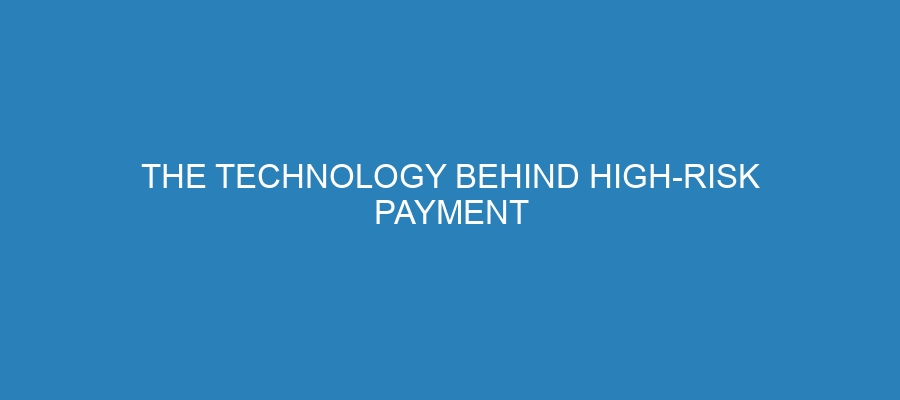In today’s digital economy, the way we conduct business is changing rapidly. With e-commerce on the rise, businesses of all sizes are trying to navigate the complex world of payment processing, especially when it comes to high-risk industries. But what exactly does “high-risk payment processing” mean, and what innovations are taking place in this ever-evolving landscape? Let’s dive in.
What Is High-Risk payment processing?
Before we explore the technology behind high-risk payment processing, it’s essential to understand what categorizes a business as “high-risk.” Common traits include high transaction values, products that are often disputed (like travel tickets or services), and industries that are often targeted for fraud (like adult entertainment, online gambling, or cryptocurrency).
Why High-Risk Processing?
For high-risk businesses, traditional payment processors often shy away due to potential chargebacks and regulatory concerns. This has led to a demand for specialized solutions tailored to meet the needs of these businesses.
Key Technologies Behind High-Risk payment processing
1. Advanced Fraud Detection
Companies now employ Artificial Intelligence (AI) and Machine Learning (ML) technologies to analyze transaction patterns in real time. This allows them to identify and flag potentially fraudulent activities before they occur. Algorithms are trained on vast datasets, enabling them to recognize behavior that deviates from the norm.
2. Tokenization
Tokenization is another cutting-edge technology making strides in secure payment processing. Instead of storing sensitive card details, tokenization replaces these with unique identifiers or tokens that are useless if intercepted. This significantly reduces the risk of data breaches, crucial for maintaining customer trust in high-risk sectors.
3. Blockchain Technology
The implementation of blockchain technology is another innovation that can’t be overlooked. Blockchain provides a transparent, tamper-proof ledger of transactions, making it easier to track and trace purchases. This not only speeds up the settlement processes but also enhances security, making it much harder for fraud to occur.
4. Multi-Currency Processing
For businesses operating online, particularly those in high-risk sectors, offering a variety of currency options can be a selling point. Advanced payment processors now utilize cross-border e-commerce solutions that allow companies to accept payments in multiple currencies without incurring significant losses due to conversion fees.
5. API Integrations
Innovative API solutions are paving the way for easier integration with various payment gateways. By using APIs, businesses in high-risk sectors can directly connect with payment processors, enabling seamless transactions and minimizing the steps a customer must take to make a purchase.
The Role of Payment Processors
Now, you might wonder: how do these technologies translate to real-world solutions? Payment processors like Payment Cloud and others have begun incorporating these innovations to facilitate smoother payment flows for high-risk businesses.
Tailored Solutions
Payment processors now offer tailored solutions that cater specifically to high-risk industries. This includes flexible chargeback management systems, risk assessments, and dedicated account managers who understand the nuances of operating in a high-risk environment.
Verification and Compliance
Ensuring compliance with ever-changing government regulations is another significant challenge for high-risk businesses. Payment processors have adapted by integrating automated compliance solutions, allowing merchants to focus on their core business activities while ensuring they remain compliant with laws and regulations.
Customer Support
Effective customer support is vital in any payment system, but it becomes even more crucial in high-risk processing. Dedicated customer support teams are essential for advising businesses on risk management strategies and offering insight into optimizing their payment systems to reduce fees and chargebacks.
FAQs
1. What qualifies a business as high-risk?
A high-risk business typically has characteristics such as high transaction volumes, susceptibility to chargebacks, and operates in industries that face significant regulatory scrutiny.
2. What are chargebacks, and why are they a concern?
Chargebacks occur when a customer disputes a transaction, leading to the reversal of funds. For high-risk businesses, excessive chargebacks can lead to higher processing fees or outright termination with payment processors.
3. Can any merchant process payments as high-risk?
While many payment processors specialize in high-risk processing, not all businesses will be accepted. Thorough vetting processes are often employed to assess risk levels.
4. Is there a way to minimize chargebacks?
Yes! Effective customer service, clear communication regarding transactions, and utilizing advanced fraud detection systems can help minimize chargebacks.
5. How can I find a reliable high-risk payment processor?
Research is key! Look for processors with a solid reputation, positive client testimonials, and specialized services tailored to your industry. Websites like Authorize.net offer valuable insights, but working directly with a high-risk specialist can provide additional benefits.
Conclusion
In an age where online transactions are the norm, understanding the technology behind high-risk payment processing is crucial for businesses that fall into this category. Innovations like AI, tokenization, and blockchain technology all play a significant role in shaping a secure and efficient payment landscape.
If you’re a business grappling with high-risk payment processing, you don’t have to navigate this complex landscape alone. For specialized expertise and tailored solutions, consider reaching out to Payminate.com. They can help you streamline your payment processing and offer indispensable insights to ensure your business thrives, even in high-risk conditions. Don’t let barriers hold you back; take the leap today!

